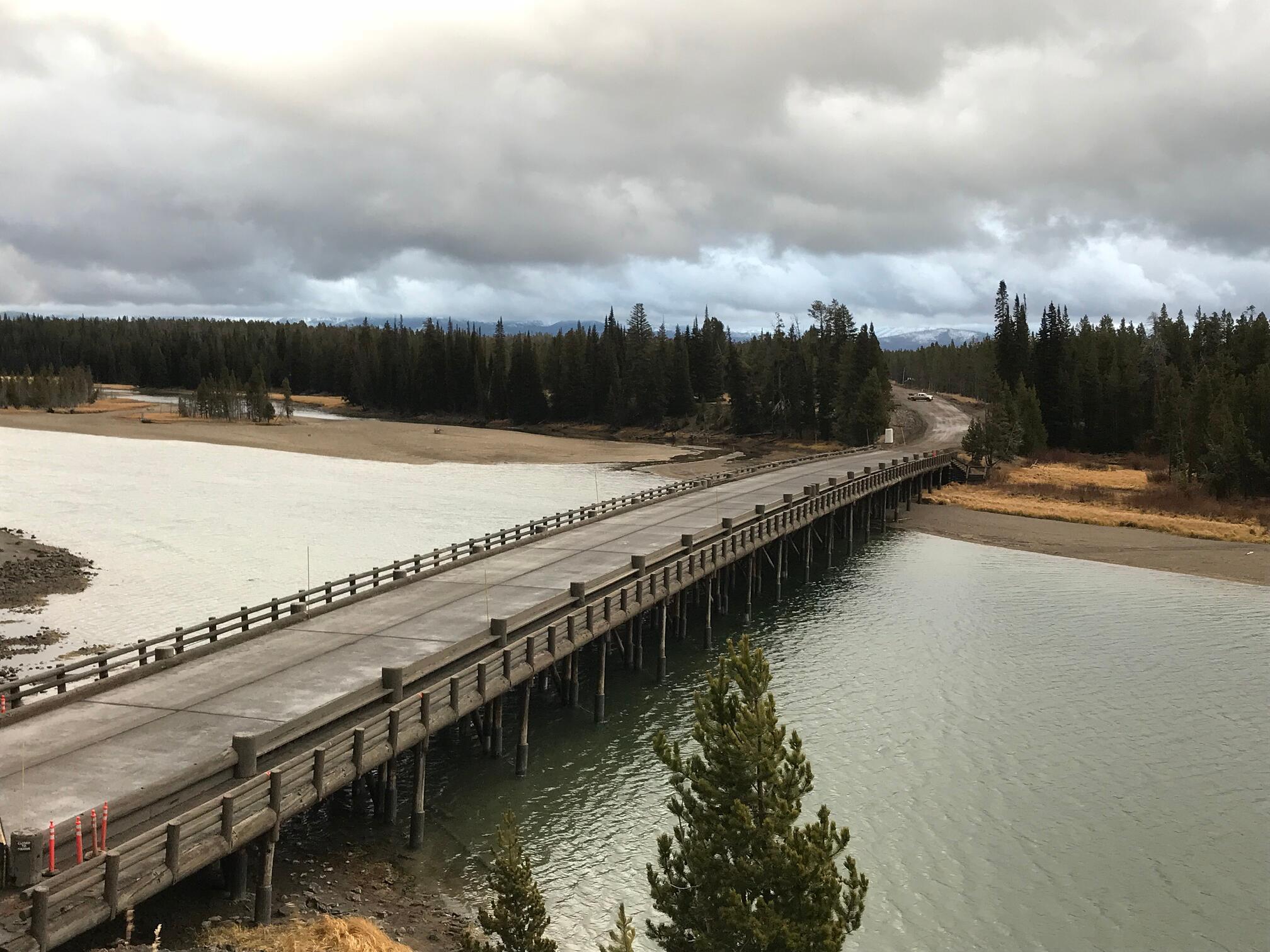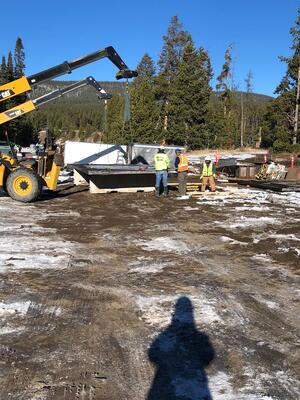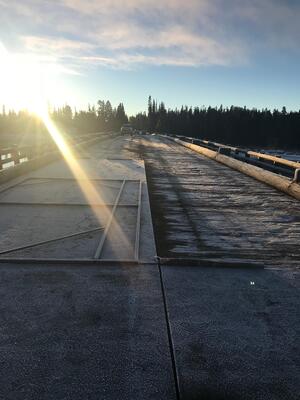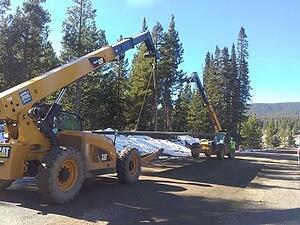
FRP Helps Construction Crew Beat Winter Weather, Solve Multiple Issues With Yellowstone National Park Landmark Bridge
Yellowstone National Park’s Fishing Bridge was aptly named when it was built in 1902. The rough-hewn corduroy log bridge straddled a major spawning area for cutthroat trout and attracted anglers by the droves. The bridge was rebuilt in 1937 and closed to fishing in 1973 following a decline in the fish population. When Hamilton Construction was subcontracted to install a new deck on the bridge, the crew faced several challenges, namely a short window of opportunity dictated by weather and the tourist season. The company couldn’t close the bridge until Oct. 15 when the park closed to visitors but only had until Nov. 5 to remove and replace asphalt and planking with a new deck. Prefabricated FiberSPAN FRP panels proved to be the right choice.

Hamilton Construction Weighs In
Fishing Bridge is part of the park’s Eastern access road which brings visitors to Yellowstone Lake. The body of water is considered to be the largest mountain lake at an elevation of 7,733 ft. Once the bridge was closed for repairs, accessing the work site meant trucks carrying oversized loads of FiberSPAN FRP panels had to cross into Yellowstone through Cody, Wyoming. Founded by Buffalo Bill Cody, the historic town is 53 miles from the park entrance. “Getting the panels to the job site was really tough,” says Chris Duty, project manager for Hamilton Construction’s Mountain West Division. “We had seven trucks with loads ranging from 12 to almost 13 ft. wide. Some trucks were rerouted which meant panels arrived out of order. We needed to be able to lay 30 FRP panels—22 of which were different styles—from West to East while working inside a very specific environmental footprint because you can’t disturb nature. That meant we had to pick some panels off trucks and stockpile them to maintain proper order. We had to determine which panels we could unload and which panels needed to be stock piled. Weather conditions also had a big impact on the work. Jason Driver, installation coordinator for Composite Advantage, was on-site throughout the project helping us work through these logistics. It all went really well because of the cooperation and communication between Composite Advantage and us. It was a team effort; everyone worked really well together.”

Design
The original structure had a driving surface of asphalt and asphalt planking on top of timber. Old timber logs formed the curbline. Typically FiberSPAN panels are bolted to a steel superstructure. In the case of Fishing Bridge, the design flexibility of FRP met project requirements for wood timber stringers or supportsspaced 4 ft. on center. Bridge owners wanted to preserve the historic integrity of the wooden structure. Specifications included AASHTO HL-93 vehicle plus impact loading; L/500 maximum deflection requirement; uplift load of 30 psf; and a minimum bending safety factor of 2.5.. Bridge length totaled 532 ft., 1 ¼ in. A 3/8-in. black aluminum oxide wear surface was applied to the deck. Deck and wear surface weighed 15.4 psf. Direct bolting was used to connect the deck to the bridge’s wood timbers.

Installation
FiberSPAN panels were connected to the existing wood deck by using a layout template to drill holes that matched pre-drilled holes in the bottom surface of the deck. Stainless steel ½-in. -bolts were then inserted through the wood into steel plates molded into the deck. The connection method was designed to handle braking and uplift loads. This approach allows bridge panels to move slightly in relationship to each other so that thermal strain does not build up in the deck
system. “I liked the simplicity of setting the panels down verses concrete overlay,” says Duty. “The bolting method was a bit challenging initially because we had to drill through 6 in. of timber and then bolt up from the bottom, but it worked out really well. I was pleased to see how easy it was. The ability to use FRP solved multiple issues for us. Because the deck spanned several piers, it strengthened the overall structure. And we completed the work a week early. We pulled out on Oct. 29. There was an inch of snow on the ground when we left.”

